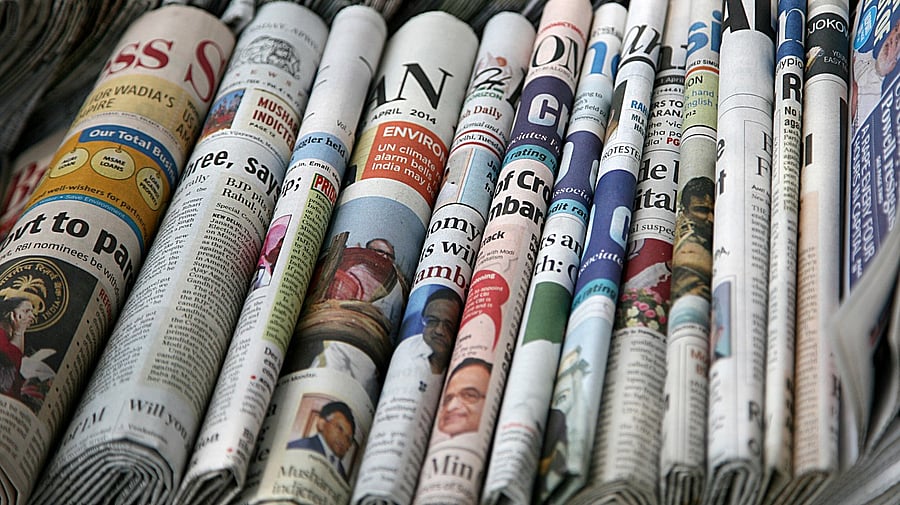
Journalism. Representative image.
Credit: iStock Photo
At a time of growing authoritarianism, swirling misinformation and threats to press freedom, the first printed newspaper started in India and its fearless editor can serve as a beacon of inspiration to journalists.
Hicky’s Bengal Gazette started by Irishman James Augustus Hicky in January 1780 in Kolkata (then capital of British India) is a shining example of courageous journalism that spoke truth to power. When he started the newspaper, he promised that “nothing will be inserted unauthenticated” and his newspaper would have a “rigid adherence to truth and facts.”
Known as the father of Indian journalism, Hicky’s newspaper, unfortunately, lasted only two eventful years before being seized by the British administration in 1782 for its outspoken and vehement criticism of the British Raj. Thankfully, Andrew Otis’ seminal book Hicky’s Bengal Gazette: The Untold Story of India’s First Newspaper documents Hicky’s life and work.
Today, the press in many countries including India is under threat, working in an environment of intimidation that includes raids on independent media houses, assaults, arrests of journalists, censorship and unfair policies relating to the media.
However, even 245 years ago, the first Indian newspaper faced several challenges when Hicky took on the powers-that-be. Yet, he fought relentlessly to not only expose the wrong-doings of the government, corruption and scandals in society but also espouse the cause of free speech and expression.
Initially, Hicky’s newspaper stayed away from politics but he couldn’t remain a silent witness to what was going on among the British ruling class and soon began to see himself as the “scourge to tyrannical villains”.
The newspaper boldly exposed the wrong-doings of top, powerful officials including Governor-General Warren Hastings and J Z Kiernander, a Swedish missionary working in India and publishing reports of the graft in the Army and corruption in high places.
Hicky even launched personal attacks on Hastings calling him “wild, disgraceful, wicked, despotic,” and that the “Great Mogul” was bent on conquering all of India. About Kiernander he wrote that he was under the influence of “filthy lucre and detestable avarice.”
Hastings ensured the newspaper could not be circulated through the postal services, dealing a blow to Hicky’s subscriptions and circulation. Yet his paper remained popular, as Hicky, undaunted, continued to publish hard-hitting reports.
Not surprisingly, both Hastings and Kiernander sued Hicky for libel, leading to his arrest. But an unrelenting Hicky continued to publish his paper from jail for some nine months when finally in March 1782, his printing press was seized on orders from the Supreme Court. That was the end of India’s first newspaper.
Hicky’s story is significant because it not only resonates with the current state of journalism in India but also because he began and influenced traditions of journalism that still exist today. He strongly supported freedom of the Press and opposed corruption and absolute power, sacrificing everything to defend his newspaper.
Hicky’s printing press remained operational for just five years, his newspaper for only two years but he laid the foundation and parameters for future printers in India. It was Hicky who trained printers who would later transform Kolkata into one of the most vibrant literary cities in Asia.
Two of his assistants, Paul Ferris and Archibald Thompson founded the Calcutta Morning Post in 1792. Later, Ferris printed the first illustrated book in Bengali written by Ganga Kishore Bhattacharji who became editor of the second Bengali newspaper, the Bengal Gazette. Ram Mohan Roy, the founder of two newspapers was also influenced by Hicky and through his newspapers he helped launch the Bengal Renaissance, a literary and intellectual awakening in the nineteenth century.
It was Hicky who inspired Indians about the power of the Press and that fighting tradition for one’s rights, something that continued during India’s freedom struggle against the British. Indian leaders such as Mahatma Gandhi and Jawaharlal Nehru turned to the Press to advocate for independence.
India currently has over 100,000 newspapers and a cumulative circulation of over 400 million copies per day (as of 2023), making it one of the most vibrant media markets in the world.
But, as author Otis notes, all is not bright beyond the statistics. Inequalities remain and high illiteracy persists. Moreover, India’s Press is only partially free. “Interference in editorial content from government and large media owners, online censorship, legal actions, threats from nationalist organisations and an increase in killings of journalists make for a worrying reality.”
Hicky should be remembered for his legacy.
(The writer is a Bengaluru-based independent journalist)